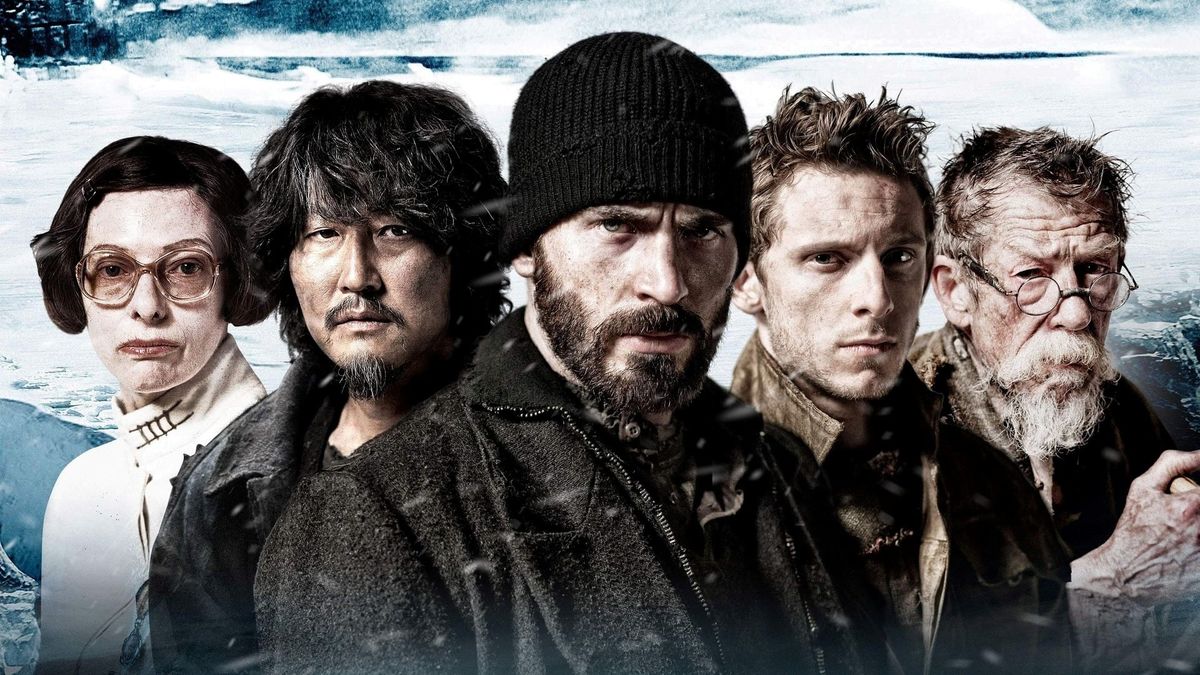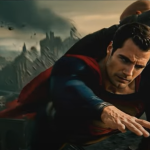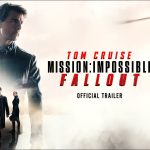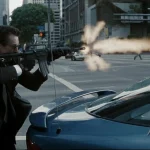Snowpiercer (2013)

“Snowpiercer,” released in 2013 and directed by the acclaimed Bong Joon-ho, is a compelling action-packed science fiction film that explores themes of class struggle, survival, and the consequences of environmental disaster. Based on the French graphic novel “Le Transperceneige” by Jacques Lob, Benjamin Legrand, and Jean-Marc Rochette, the film presents a unique and thought-provoking narrative set in a frozen world where the remnants of humanity fight for survival aboard a perpetually moving train.
The film begins in a future where a failed climate-change experiment has resulted in a new ice age, wiping out most of life on Earth. The last survivors are aboard the Snowpiercer, a massive train that circles the globe endlessly. The train serves as a microcosm of society, divided by class. The elite occupy the luxurious front cars, enjoying abundant resources and privileges, while the impoverished inhabitants of the tail section live in squalor and oppression. This stark division sets the stage for a revolutionary struggle that unfolds throughout the film.
At the heart of the narrative is Curtis Everett, played by Chris Evans, who emerges as the reluctant hero of the tail section. Curtis, along with a group of fellow passengers, decides to lead a rebellion against the oppressive regime of the train’s ruling class. His journey from the depths of the train to its front becomes a metaphor for the struggle for justice and equality, highlighting the desperation and determination of those who have been marginalized. Curtis’s character development is compelling, as he grapples with the moral implications of their violent quest for freedom.
Bong Joon-ho’s direction masterfully balances action with profound social commentary. The film is visually stunning, with each train car representing different aspects of society, from the opulent living quarters of the wealthy to the grim conditions of the tail section. The cinematography by Hong Kyung-pyo captures the claustrophobic environment of the train while also emphasizing the contrast between the different classes. This visual storytelling enhances the film’s exploration of societal inequality and the human condition.

One of the film’s most striking features is its ensemble cast, which includes notable performances from Tilda Swinton, Octavia Spencer, and Ed Harris. Tilda Swinton plays Mason, the comically villainous spokesperson for the elite, embodying the absurdity and cruelty of the ruling class. Her performance is both chilling and darkly humorous, highlighting the lengths to which those in power will go to maintain control. Ed Harris, as the enigmatic Wilford, the creator of the Snowpiercer, delivers a captivating portrayal of a man who believes he is the savior of humanity, despite the horrific means he employs to maintain order.
The film also delves into philosophical questions about the nature of society and the human condition. As Curtis and his group fight their way through the train, they confront various moral dilemmas that challenge their understanding of justice and sacrifice. The film raises questions about the ethics of revolution and the cost of freedom, forcing viewers to consider whether the end justifies the means. This exploration of moral ambiguity adds depth to the narrative, elevating it beyond a standard action film.

The action sequences in “Snowpiercer” are exhilarating and inventive, featuring a blend of intense combat and creative choreography. The train’s confined space creates a unique setting for the battles, enhancing the sense of urgency and tension. One particularly memorable scene involves a dramatic fight sequence in a darkened train car, where the darkness and lighting create a surreal atmosphere, heightening the stakes for the characters involved. This blend of action and visual artistry is a hallmark of Bong Joon-ho’s filmmaking style.

Another significant aspect of “Snowpiercer” is its commentary on environmental issues and the consequences of humanity’s exploitation of the planet. The film serves as a cautionary tale about the perils of climate change and the social injustices that arise from environmental disasters. By portraying a world where the rich thrive while the poor suffer, “Snowpiercer” critiques the socioeconomic disparities that often accompany ecological crises. This message resonates powerfully in today’s context, where climate change continues to threaten global stability.
As the film progresses, the journey of Curtis and his allies becomes not only a fight for survival but also a quest for identity and purpose. Curtis must confront his own motivations and the potential for becoming what he despises. The final revelations in the film challenge viewers to consider the cyclical nature of oppression and the possibility of breaking free from established systems. The film’s conclusion leaves audiences with lingering questions about the future of humanity and the potential for change.

In conclusion, “Snowpiercer” is a remarkable achievement in modern cinema, combining thrilling action with deep social commentary. Bong Joon-ho’s direction, coupled with a strong ensemble cast and striking visuals, creates a narrative that is both entertaining and thought-provoking. The film’s exploration of class struggle, morality, and environmental issues remains relevant, prompting critical discussions about society’s current trajectory. “Snowpiercer” is not just a film about survival; it is a powerful reflection on the human spirit’s resilience and the quest for justice in an unjust world. Its legacy endures, inviting viewers to reflect on their roles in shaping a more equitable and sustainable future.











